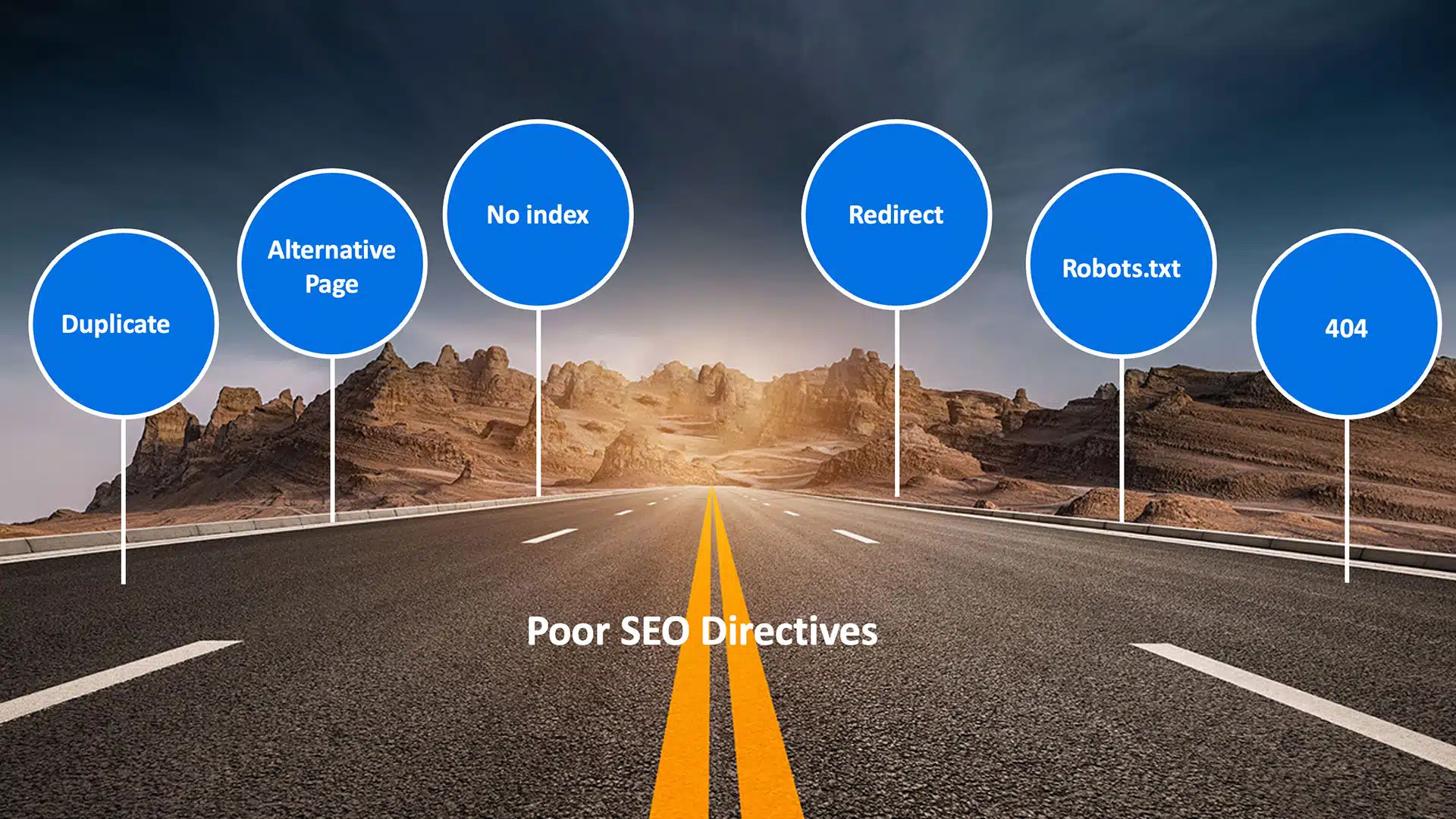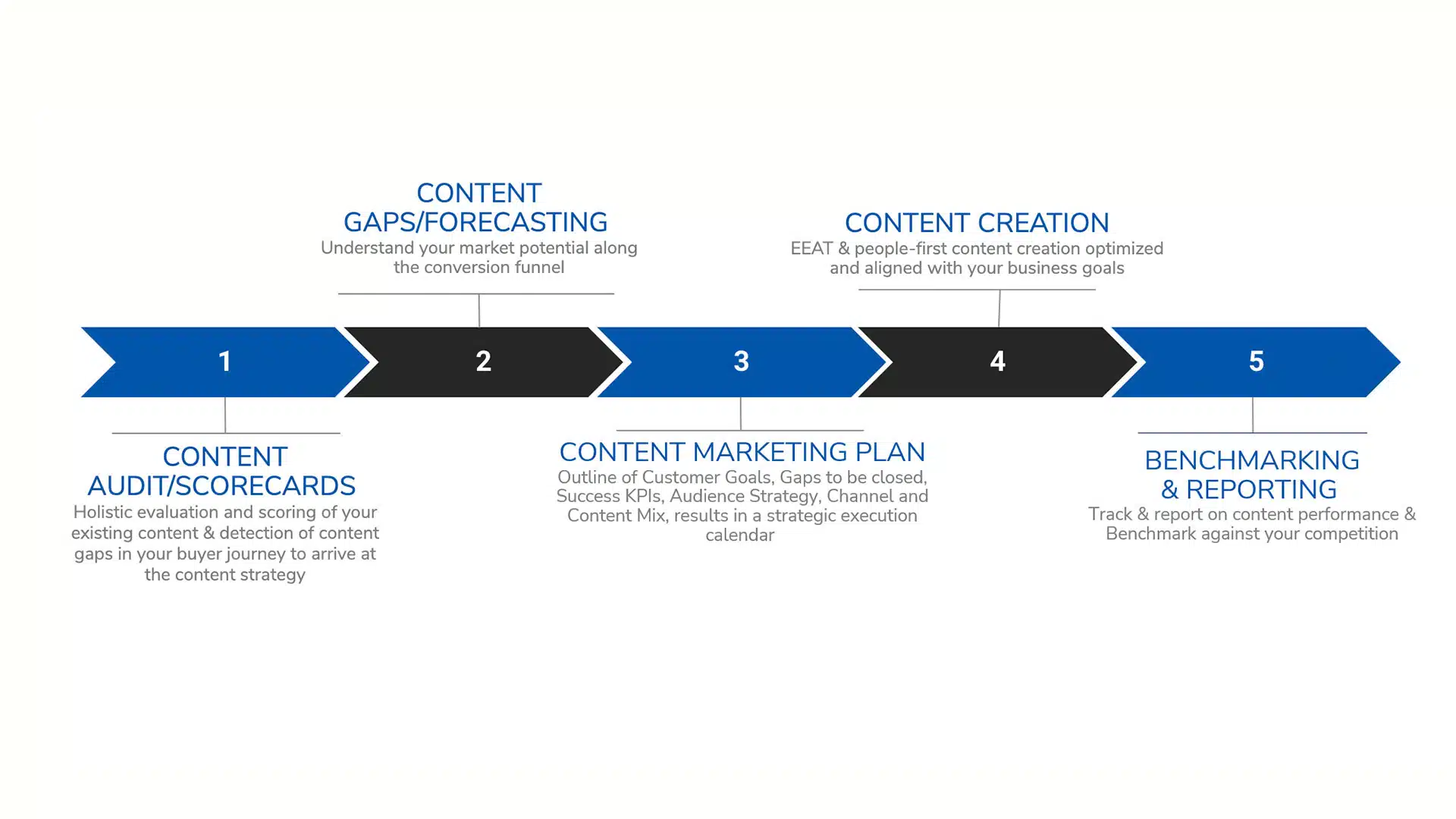How to safeguard your content strategy in an AI-driven search landscape
Adapt your content strategy for the AI-powered search era. Understand Google's guidelines for creating helpful content for searchers.
Search engines, especially Google, are in a constant state of evolution.
Earlier this month, Google announced de-emphasizing HowTo and FAQ rich results in search.
Last year, to promote more user-centric content, Google added “experience” to their foundational criteria of expertise, authority, and trust, urging marketers to hone in on what matters to end users and consumers.
Google’s recently released guidelines for creating helpful content outline the vital criteria marketers need to be aware of in a search world that’s constantly evolving and driven by AI.
Today, the paramount question isn’t about quantity but rather the quality and impact of the content.
How can we gauge its effectiveness, align our strategies with changing search algorithms, and understand evolving customer behavior?
This article delves into strategies and data-driven methods you can deploy to ensure your content remains future-proof and relevant in the age of AI. We will be covering:
- Google SGE: What does it mean for content creators?
- Multisearch and experience: Essential factors for your content strategy
- Helpful content strategy: 5 must-haves for success
Google SGE: What does it mean for content creators?
Google believes that valuable content is user-centric.
Their Search Generative Experience (SGE) aims to provide users with accurate answers without navigating away from Google’s homepage.
Results must have credible citations for validation. As content creators, our challenge is ensuring content is discoverable, consistently distributed, and adequately referenced.

To prepare for SGE (slated to launch in December 2023), brands can consider these three steps:
Discovery
Ensure that your valuable content is easily found. Due to gaps in your platforms, CMS and Programming practices, most sites face indexing issues.
Regularly monitor Search Console for technical requirements and indexation and apply the appropriate schema to enhance content discoverability. This is the most critical element for content.
Learn more about future-proofing your digital presence in my previous article.

Relevance
Your content should be pertinent, rich in entities, and topical. Incorporating both branded and non-branded content is crucial.
I’ve extensively discussed the competitive advantage of entity search and steps to devise an entity-first strategy in other articles.
Your content should have the right mix of branded and non-branded, navigational, and transactional content.
Long-tail queries account for almost 35% of traffic and almost 50% of conversions, according to Ahrefs.
Content created around such queries drives more qualified traffic over branded content and is a crucial content pillar.
Visibility
The content displayed in SGE constantly changes, making it vital to keep track of frequently featured results and incorporate similar content types into your strategy.
We suggest creating a list of results that often appear in SGE and ensuring your content strategies include those content types.
A solid knowledge graph of your brand, localized and current events, videos, and an expert perspective help ensure content is visible in rich results and SGE.
Ensure your Google Business Profile (GBP), PPC campaigns and PR campaigns are enriched and enhanced with the same topics, entities, images and content to bring consistency.
Multisearch and experience: Essential factors for your content strategy
In 2022, Google launched its Multisearch feature. Brands are now encouraged to diversify their content offerings, incorporating images, videos, news, and more.
Organizing, fine-tuning, and ensuring this diverse content is discoverable is crucial.
As a brand, you must go through a three-step process to maintain consistency by centralizing all assets, optimizing them, and ensuring they are discoverable.
Future-proof experience from discovery to advocacy
Google recently added experience as part of their helpful content guidelines and new metrics that consider site loading speeds.
Google has always measured experience based on bounce rate, how fast your page loads, and how the user interacts with your content.
Their new metric that measures page experience, called Interaction to Next Paint, also stresses the need for how responsive your site and page are to the user’s query.
Delivering a consistent omnichannel experience across all touch points, including all devices and channels, is critical.
When we prioritize Google as a channel, we should also ensure message and image consistency from GBP to paid ads, website, emails, and PR campaigns.
While planning or accessing your content strategy, consider all types of content, including images, videos, news, web stories, etc.
Personalizing experience is key for winning, but the experience must be consistent across all channels and devices.
Helpful content strategy: 5 must-haves for success
AI-generated content offers a promising frontier for content creation, but harnessing its potential requires a balanced approach.
Google announced that AI-generated content is not against its content guidelines as long as the content is not intended to manipulate rankings and it solves user needs.
AI can be a great tool for drafting content, followed by fact-checking and a thorough human editorial review to maintain accuracy, authenticity, and relatability.
In an age of information saturation, standing out requires producing helpful content that serves the needs of your audience, and this hinges on building a solid foundation that aligns with your business goals.
Here are the five must-haves that are crucial for any helpful content strategy:
1. Content audit
Recognizing the current landscape of your content is vital for meaningful growth and refinement.
A content audit is a comprehensive review of the content KPIs on your website, from discoverability to SERP presence to performance.
This audit helps identify which content pieces are serving your business goals and what gaps are present you can fill in and build on.
Qualitative, quantitative metrics and performance metrics are must have to do content audits and gaps.

2. Forecasting
Anticipating the potential impact of content is essential for optimizing resources and achieving maximum engagement.
Forecasting means assessing your content’s projected reach (opportunity), engagement, and conversion potential.
Content creators can better tailor their content by:
- Understanding the anticipated resonance with target audiences and possible trending topics.
- Analyzing past content successes.
This ensures the content piece has the desired effect and delivers on audience expectations and business goals.
3. Content marketing plan
Strategic planning paves the path for content that engages and drives business objectives.
A content marketing plan is a strategic roadmap that outlines your content goals, methods to achieve them, and metrics to evaluate success.
By tying your plan back to the KPIs discovered in the content audit, you can ensure you’re making data-driven decisions that will have the right impact.
4. Content calendar
Creating a detailed schedule for your content plan ensures consistency and maximum engagement with your audience.
A content calendar organizes the production and publication of content over a specific timeframe, enabling strategic distribution and allowing you to capitalize on current trends or seasonal events.
5. Performance reporting
To refine and enhance content, understanding its ongoing impact is paramount.
Performance reporting gathers data on how your content is doing, from engagement rates to audience feedback, allowing for iterative improvement and alignment with audience needs.

Future-proofing your content strategy
In a digital landscape dominated by evolving algorithms and AI-driven search capabilities, the mandate for content creators and marketers has never been clearer: adaptability and a user-centric approach are paramount.
Brands must:
- Understand the customer journey and its touchpoints.
- Bring a data-driven approach to decision-making.
- Evolve content writer jobs to be more strategy-oriented.
We also need to ensure our platforms are integrated to accomplish experience goals.
The wave of changes, from Google’s Search Generative Experience to Multisearch functionalities, necessitates that we remain agile, proactive, and deeply attuned to audience needs.
As AI continues to reshape the search domain, having a holistic understanding of our audience is more important than ever to ensure that what we create today remains relevant, valuable, and future-proof.
Opinions expressed in this article are those of the guest author and not necessarily Search Engine Land. Staff authors are listed here.
Related stories